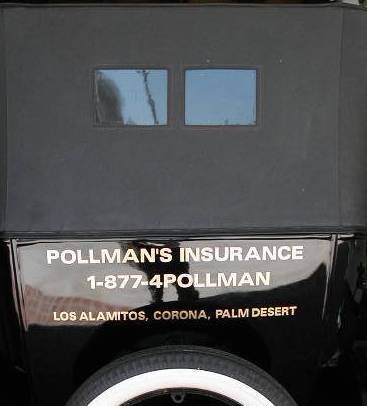|
News Rand Corporation Evaluates Scenario: Ten Kiloton Nuclear Bomb Concealed In Cargo Container, Shipped To Port of LB, Unloaded And...
(August 16, 2006) -- In a sobering report for Long Beach residents and the nation as a whole, the RAND corporation has released a report projecting the consequences of terrorists concealing a ten kiloton nuclear bomb in a shipping container and shipping it to the Port of Long Beach...where the container is unloaded onto a pier and explodes shortly after arriving.
"We used this scenario because analysts consider it feasible, it is highly likely to have a catastrophic effect, and the target is both a key part of the U.S. economic infrastructure and a critical global shipping center," says a summary accompanying the report. It continues
Within the first 72 hours, the attack would devastate a vast portion of the Los Angeles metropolitan area. Because ground-burst explosions generate particularly large amounts of highly radioactive debris, fallout from the blast would cause much of the destruction. In some of the
most dramatic possible outcomes:
- Sixty thousand people might die instantly from the blast itself or quickly thereafter from
radiation poisoning.
- One-hundred-fifty thousand more might be exposed to hazardous levels of radioactive
water and sediment from the port, requiring emergency medical treatment.
- The blast and subsequent fires might completely destroy the entire infrastructure and all
ships in the Port of Long Beach and the adjoining Port of Los Angeles.
- Six million people might try to evacuate the Los Angeles region.
Two to three million people might need relocation because fallout will have contaminated
a 500-km2 area.
- Gasoline supplies might run critically short across the entire region because of the loss of
Long Beach’s refineries -- responsible for one-third of the gas west of the Rockies.
The report's summary states:
The early costs of the Long Beach scenario could exceed $1 trillion, driven by outlay for medical
care, insurance claims, workers’ compensation, evacuation, and construction. The $50 billion
to $100 billion for 9/11 puts this figure into perspective. In general, consequences would
far outstrip the resources available to cope with them.
In addition, over time, the economic effects of the catastrophe are likely to spread far
beyond the initial attack, reaching a national and even international scale. Decisionmakers
would face two particularly difficult challenges: keeping the global shipping supply chain operating
and restoring orderly economic relationships.
The report foresees that in the aftermath of an attack, "different stakeholder groups affected might have differing interests:
In terms of global shipping, the main tension might be between the political aim of preventing a future attack and the business
interest in seeing that U.S. ports and the global shipping supply chain continue to operate.
The only way to completely mitigate the risk of a second strike would be to close all U.S.
ports and suspend all imports indefinitely. This would be the national security community’s
likely position. Yet in business terms, this position would be untenable. The loss of the ports of
Long Beach and Los Angeles alone, which handle 30 percent of U.S. shipping imports, would
already be substantial. All U.S. ports combined carry out 7.5 percent of world trade activity.
Accordingly, the business community would likely call for ports to stay open, or to reopen as
early as possible.
But harsh realities facing the financial and real estate communities might prove a barrier.
The Long Beach attack might cripple an insurance industry struggling to absorb massive losses
from claims. Insurance would be in tremendously short supply -- particularly for terrorist and
nuclear risks. Without it, ports and related infrastructure could not operate. Further complicating
the issue is the high probability that people would flee port cities, severely depleting
local labor supplies. Given these conditions, all U.S. ports would likely close indefinitely or
operate at a substantially reduced level following the attack. This would severely disrupt the
availability of basic goods and petroleum throughout the country.
The attack is likely to have dramatic economic consequences well beyond the Los Angeles
area:
- Many loans and mortgages in Southern California might default.
- Some of the nation’s largest insurance companies might go bankrupt.
- Investors in some of the largest financial markets might be unable to meet contract obligations
for futures and derivatives.
While exact outcomes are difficult to predict, these hypothetical consequences suggest
alarming vulnerabilities. Restoring normalcy to economic relations would be daunting, as
would meeting the sweeping demands to compensate all of the losses.
The full report explains the basis for its analysis [footnotes omitted in our text]:
The attack involves a hypothetical 10-kiloton nuclear explosion in a shipping container placed on the pier in the port. There are a number of motivations for this particular approach. First, much has been written about the potential for nuclear terrorism, focusing on the supplies of weapons and nuclear material that might be available to our adversaries. Russia has played a central role in this analysis, given the large number of weapons it possessed at the height of the Cold War and the lack of controls that followed
with the breakup of the Soviet Union. However, new potential sources have arisen in recent
years with the rise of North Korea’s nuclear ambitions and the revelations of the A. Q. Khan
network in Pakistan.
In this environment, there has been a growing effort to limit the opportunities for terrorists
to smuggle a nuclear weapon into the United States. Specifically, new initiatives to improve
the security of the container shipping network have been proposed, but the challenges are
large. Each day, 20,000 shipping containers from ports all over the world are unloaded in the
United States. Given that there are 361 operational seaports in the country, it will be difficult
to implement comprehensive in-port security programs. This vulnerability is partially offset
by the Container Security Initiative that has placed U.S. inspectors in foreign ports to screen
and validate the contents of containers shipping to the United States. Currently this program
covers approximately 50 percent of the traffic in the largest ports, but its effectiveness against
smuggling has not been tested, and there still are large volumes of containers that enter the
country without any screening or inspection4.
To address these problems, there has been great interest in new detectors that might be
able to provide warning of a device embedded in a container, ideally while a ship is still at
sea. Unfortunately, recent technical reviews indicate that this type of technology is still in its
infancy and that we have very little capability to reliably detect hidden weapons before they
reach our shores.
In summary, we chose to analyze a terrorist nuclear explosion in a shipping port because
it seems quite plausible, although the actual probability of such an event is impossible to calculate.
We chose a 10-kiloton explosion because it is possible to obtain such a yield with a relatively
crude unboosted design.
The report, "Considering the Effects of a Catastrophic Terrorist Attack" by Charles Meade, Roger C. Molander, was conducted by the RAND Center for Terrorism Risk Management Policy.
In May, as reported by LBReport.com, the "American Association of Port Authorities" -- in which the Port of Long Beach is a member -- opposed an amendment to the "SAFE Port" Act in the House of Representatives that would have required the inspection of all incoming cargo containers.
May 2006: House Repubs Defeat Dem Effort To Require Inspection Of All Incoming Cargo Containers, Fails 202-222; "SAFE" Port Bill Without 100% Inspections Passes 421-2. Senate Legislation Requiring 100% Inspection Advances
May 2006: Representing Your Interests? On Inspecting All (Not Just Some) Inbound Cargo Containers, Read What House Members Said & How They Voted
Return To Front Page
Contact us: mail@LBReport.com
|

Alford's English Gardens Cultivates Individuality. Beautify Your Home. Info, Click Here
 Mike & Kathie Kowal know Los Cerritos, Bixby Knolls, Cal Hts. and beyond. Click to learn more Mike & Kathie Kowal know Los Cerritos, Bixby Knolls, Cal Hts. and beyond. Click to learn more

DrainPros: Unclog Drains + Full Service Plumbing, Locally Owned Pros. Info, Click Here

Wedding Entertainment Planning Is His Specialty. Bill Lovelace Delivers Personalized, Wedding Event Services. Get Info, Click Here

Preserve Your Family's Most Precious Photos and Videos on DVD. Click For Info

Carter Wood Floors, a LB company, will restore your wood floor or install a new one. Enhance your home. Click pic.
|









